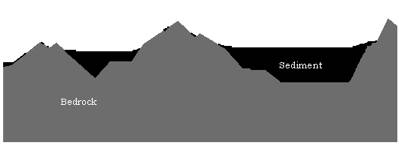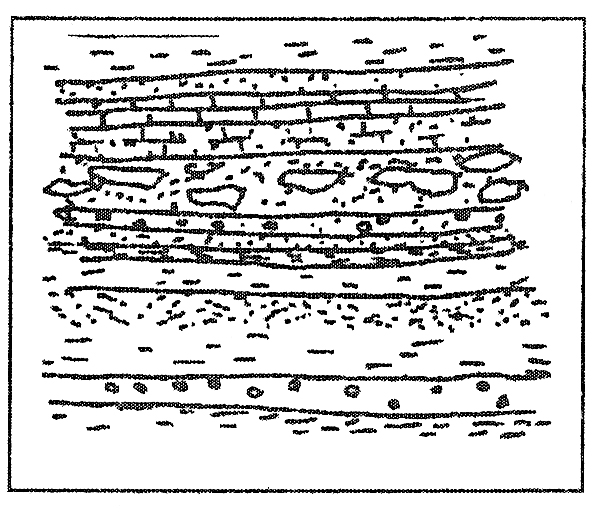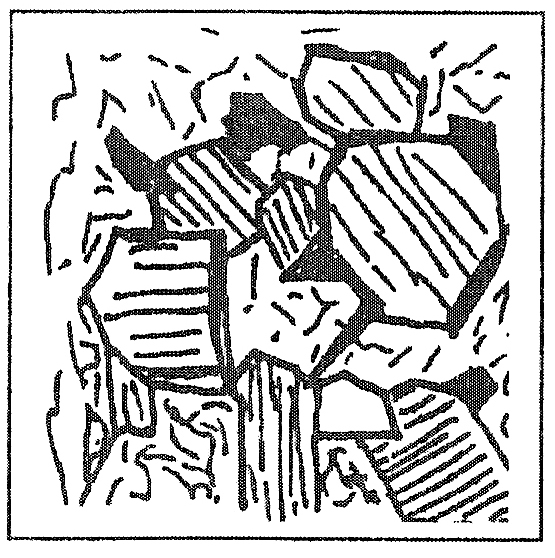
Big Ideas
After completing this course you should understand:
- The differences between “bedrock” and "sediment.”
Bedrock
Bedrock is a portion of the intact and continuous part of the Earth's crust.
Life as we know it would not be possible on earth without the heat from the inside of the Earth, but the inside of the Earth immediately below the outer rocky crust is inhospitable. The crust of the Earth, the thin, continuous rocky skin that separates the molten portion of the Earth from the atmosphere is solid rock called bedrock. In mountainous area of Salt Lake County bedrock is at or within a few feet of the surface. Bedrock underlies all of the valley areas of Salt Lake County although it may be hundreds or even thousands of feet below the land surface. Where bedrock is exposed at the surface, we call it an outcrop. Where bedrock is not exposed at the surface, we call it buried bedrock.Sediment
Sediment consists of solid fragments of rock that have been transported by water, wind, ice, or gravity and/or solid materials precipitated chemically from water or secreted by organisms.
Sediment accumulates like a blanket across portions of the Earth's crust. Sediment is not “firm and coherent.” The dirt, sand, clay, and gravels we build most homes and schools on in Salt Lake County is sediment. Most sediments will eventually become firm and coherent but it may take millions of years for geologic processes to bury and transform the sediments into bedrock.
- The difference between minerals and rocks:
Minerals - the building blocks of rocks
A mineral is defined as a naturally occurring, inorganic element or compound having an orderly internal structure and characteristic chemical composition and physical properties.
Some would argue that a mineral should also have a characteristic crystal form, but we will not.Rocks
A rock is defined as a naturally occurring, nonliving, firm and coherent aggregate mass of one or more minerals or solid organic material.
Some would not include solid organic material as rock, but we live in Utah, and a solid organic material - coal - is our state rock. Who would want to argue that our state legislators do not know a rock when they see one?DISTINCTIONS:
CAUTION: English is a wonderful language but sometimes a word has more than one meaning. We look at the "rock" (bedrock) that makes up the mountains and we look at a "rock" (sediment) lying on the ground. So we use the word "rock" to mean two different things. This can confuse your students.A child hands you a rock.
It once was bedrock.
It now is a piece of sediment.
It is composed of minerals.
- The three basic rock types
sedimentary metamorphic igneous
- The Rock Cycle and its four basic rock processes and products:
- Sedimentation which produces sediments,
- Lithification which produces sedimentary bedrock,
- Metamorphism which produces metamorphic bedrock, and
- Melting and crystallization which produce igneous bedrock.
Classroom Resources:
This is an age appropriate activity for elementary students 4th grade and up:
What About Rocks?



